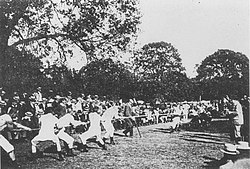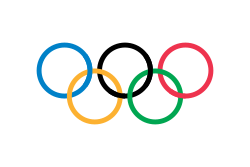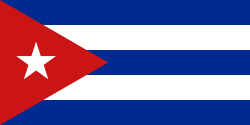Medaljefordeling ved sommer-OL 1900

Medaljefordelingen ved sommer-OL 1900 gav medaljer til 21 af de 24 deltagende nationer. Som noget særligt for de første år med moderne olympiske lege, kunne en atlet stille op til konkurrence sammen med en atlet fra en anden nation. Disse er siden registreret som Blandet hold.
Man uddelte ikke en guldmedalje, men derimod en sølvmedalje til 1. pladsen og en bronzemedalje til 2. pladsen. IOC har efterfølgende uddelt både guld, sølv og bronze til atleterne for, at trække de første lege op på samme niveau som i dag.
| Olympiske Sommerlege 1900 | |||||
|---|---|---|---|---|---|
| Nr. | Land | Guld | Sølv | Bronze | Total |
| 1 | 26 | 41 | 34 | 101 | |
| 2 | 19 | 14 | 14 | 47 | |
| 3 | 15 | 6 | 9 | 30 | |
| 4 | 6 | 3 | 3 | 12 | |
| 5 | 6 | 2 | 1 | 9 | |
| 6 | 5 | 5 | 5 | 15 | |
| 7 | 4 | 2 | 2 | 8 | |
| 8 | 2 | 2 | 0 | 4 | |
| 9 | 2 | 0 | 3 | 5 | |
| 10 | 1 | 3 | 2 | 6 | |
| 11 | 1 | 2 | 2 | 5 | |
| 12 | 1 | 1 | 0 | 2 | |
| 13 | 1 | 0 | 1 | 2 | |
| 14 | 1 | 0 | 0 | 1 | |
| 15 | 0 | 3 | 3 | 6 | |
| 16 | 0 | 2 | 3 | 5 | |
| 17 | 0 | 2 | 0 | 2 | |
| 18 | 0 | 1 | 3 | 4 | |
| 19 | 0 | 1 | 1 | 2 | |
| 20 | 0 | 0 | 1 | 1 | |
| 0 | 0 | 1 | 1 | ||
| Total | 90 | 90 | 88 | 268 | |
Kilde
| ||||||||||||||
Medier brugt på denne side
Olympic Rings without "rims" (gaps between the rings), As used, eg. in the logos of the 2008 and 2016 Olympics. The colour scheme applied here was specified in 2023 guidelines.
Olympic Rings without "rims" (gaps between the rings), As used, eg. in the logos of the 2008 and 2016 Olympics. The colour scheme applied here was specified in 2023 guidelines.
Olympic Movement flag
Proportions 2:3, created 1913, adopted 1914, first used 1920.
- Colors as per http://fairspielen.de/wp-content/uploads/2015/09/Annexe-3-Olympism_and_the_Olympic_Symbol_-_Principles_and_Usages_Guide-1.pdf
- blue: PMS 3005C
- yellow: PMS 137C
- black: PMS 426C
- green: PMS 355C
- red: PMS 192C
- Dimensions of the rings taken from http://fairspielen.de/wp-content/uploads/2015/09/Annexe-3-Olympism_and_the_Olympic_Symbol_-_Principles_and_Usages_Guide-1.pdf
Forfatter/Opretter: F l a n k e r, Licens: CC BY-SA 2.5
Flag of the Kingdom of Sardinia (1851-1861) and of the Kingdom of Italy (1861-1946). Use: Civil flag and ensign. In a governmental or a military context, the crowned version (see Crowned version) was always used (as State flag and naval ensign).
The Star of India Red Ensign
Flag of the Germans(1866-1871)
Swedish merchant flag 1844-1905
US Flag with 45 stars. In use 4 July 1896–3 July 1908. Created by jacobolus using Adobe Illustrator, and released into the public domain. This flag was used during the Spanish-American War.
Forfatter/Opretter: F l a n k e r, Licens: CC BY-SA 2.5
Flag of the Kingdom of Sardinia (1851-1861) and of the Kingdom of Italy (1861-1946). Use: Civil flag and ensign. In a governmental or a military context, the crowned version (see Crowned version) was always used (as State flag and naval ensign).
Flag of Hungary from 11 April 1848 to April 1849 and from 28 July 1867 to 1869.
Flag of Norway In 1844 a union badge combining Norwegian and Swedish colors was placed at the hoist of both countries' flags. The badge was popularly called Sildesalaten ("the herring salad") from its resemblance to a herring salad. Initially, the union flag was popular in Norway, since it clearly denoted the equal status of the two united states. But as the union with Sweden became increasingly less popular, the Norwegian parliament abolished the union badge from the national (merchant) and state flags in 1899. At the dissolution of the union in 1905, the badge was removed from the navy flag as well. Sweden kept it in all flags until 1905.
House colours of the House of Habsburg





















